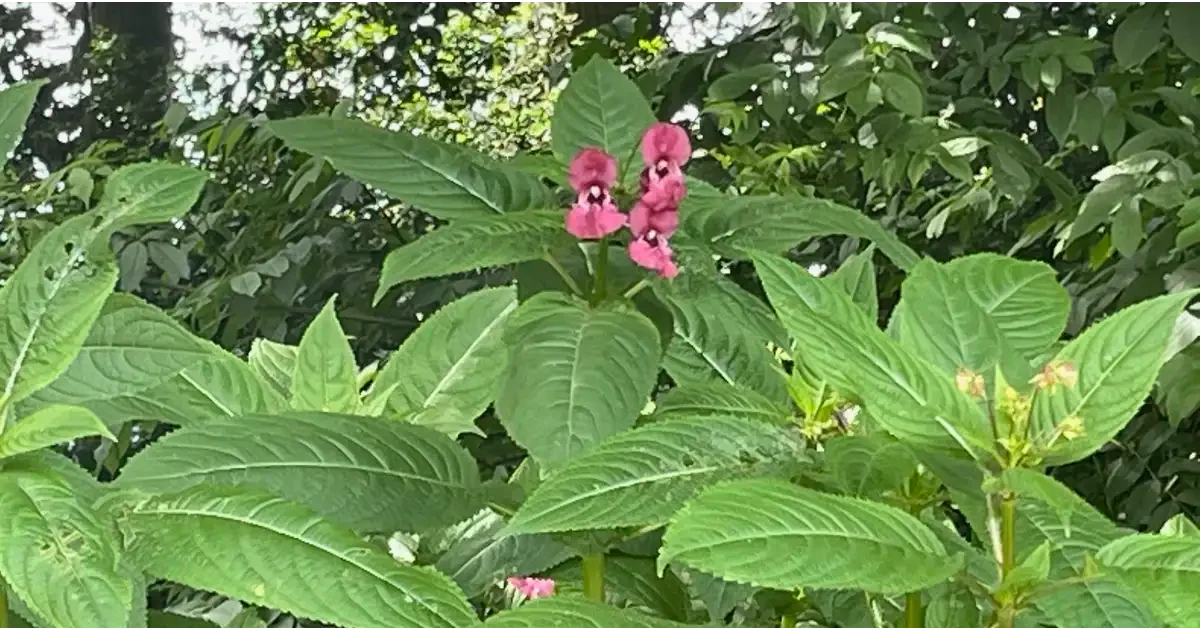What is Himalayan Balsam?
Himalayan Balsam is an invasive plant species that is threatening our rivers and countryside. It grows along the banks of the Ouse, outcompeting native species and causing erosion.
Himalayan balsam can grow to more than three metres in height in a year and each plant can produce 800 seeds. These seeds are dispersed up to seven metres away from the parent plant, most frequently by humans and animals brushing past the ripe seedpods.
When large clumps of Himalayan Balsam form it shades the smaller plants from the necessary sunlight they need. The only plant likely to compete in these ares are nettles.
What is a Balsam Bash?
A ‘Balsam Bash’, involves pulling up the Himalayan balsam, to prevent it from setting seed and spreading further along the riverbank. Clearing a site like this reduces the amount that will grow in the same place in future years. Our Countryside team pull plants throughout June and always clean and disinfect their boots before going to different river sites to prevent the seeds dispersing far and wide.
What about the bees?
Himalayan Balsam is a good nectar source, and because it flowers late, it is widely loved by beekeepers. However, it is such a good source of nectar that often bees will visit Himalayan Balsam in preference to native plants. This means that native plants get a double hit by not being pollinated well, and also by being out-competed by the Balsam. This can lead to thick stands of Himalayan Balsam, with lower overall biodiversity, which die down in winter and leave areas prone to erosion.

